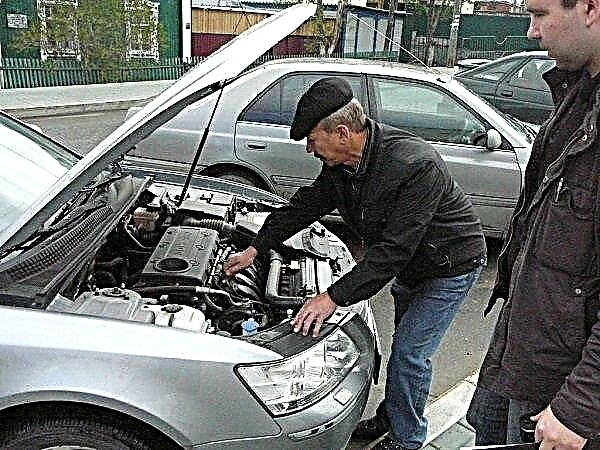
The accelerator pedal is one of the most frequently used parts by drivers, especially by hobbyists. However, its cunning lies in its ability to jam in the pressed position, thereby turning an easy voyage into a real motorist's nightmare, because in such a situation the car begins to accelerate by itself. What happens when you press the gas pedal and what other surprises you can expect from it - more on that later.
Features of the mechanical accelerator

In cars equipped with carburetor motors, the throttle position is changed with the help of a mechanical gas pedal, due to which the combustible mixture entering the carburetor is dosed. The connection of the pedal itself with the damper is provided by means of a cable or levers. And thanks to this design, the level of effort required to "add gas" is reduced.
In general, it is very difficult to find a gas pedal operating on "mechanics" in new cars. It has long been replaced by an electronic one.
How does the electronic pedal function

Its purpose and principle of operation are similar to a mechanical gas pedal, only here everything is somewhat more complicated. The electronic accelerator is used exclusively on vehicles with injection engines, and it is based on three elements:
- pedal complex;
- converter;
- throttle valve complex.
When the driver sets the gas pedal in motion, the parameters of the angle of deflection of its lever are fixed by the devices provided for this and are sent to the converter. Then the updated signal is sent to the electronic control unit, which calculates the required degree of opening of the damper, which is what guides its actuator, performing such an action.
In this case, the system that controls the damper will not be able to set this element in motion without a command from the ECU. After all, the executing mechanism needs data on what angle needs to be set for the current operating mode of the motor.
And the electronic control unit, on the contrary, is able to turn the throttle as it pleases, without waiting for the required order from the gas pedal. Similar measures can be taken to save machine resources or for safety reasons. It turns out that the electronic acceleration system does not always obey the car owner.
Force majeure: stuck gas pedal

But if the pedal itself does not obey, then this is already serious. Its jamming is provoked by:
- hitting the edge of the car mat under the pedal;
- scuffs formed as a result of rubbing the veins of the accelerator cable and limiting the pedal travel;
- malfunctions in the electronics of the accelerator.
In almost any car equipped with a gas pedal, this part can jam due to an electrical or mechanical malfunction. But if this happened, you should not panic, but assess the situation on the roadway and find a site to park your car.
If the depressed pedal sticks, you should try to return it back with your right foot. So you can put the car into free movement and stop it calmly. If the pedal is easily transferred to its original position, but the motor does not slow down, then it’s more likely not in it.
To curb the accelerating car, put it into neutral. A simple release of the clutch can stop acceleration and normalize the speed of the machine from the manual transmission. The handle of the "machine" must be placed opposite the "N" icon. Not to be confused with R for reverse or P for parking. To keep the vehicle from getting out of control at all, it is also not recommended to apply the emergency or parking brake.
In this emergency driving mode, the driver should look not at the floor, not at the pedals, but only at the road. Trying to return the accelerator pedal with your left foot is also not worth it. When the vehicle can be immobilized, you need to deactivate the ignition, start the emergency gangs and use the services of a tow truck.
If in the end it turns out that the curved mat interferes with the gas pedal, then it will have to be changed. If the cable is jammed, it is necessary to check the integrity of this part by identifying possible damage.
In the absence of significant deformations, the cable can be simply lubricated. If the flaws are clearly visible, then it is advisable to replace it. The main stages of the process:
- removing the cable tip from the throttle with a flat screwdriver;
- removing the cable from the metal mount;
- Disconnecting the tip of the replacement part from the pedal.
Here, work with a screwdriver should be very careful so as not to damage the fragile plastic parts. And after installing a new cable, it is recommended to lubricate the areas of possible friction and the areas of attachment of this part to the gas pedal.
Electronic pedal repair

Like other parts of a car, the accelerator can also break. A common symptom of a malfunction of this device is the short-term or complete ignorance of the commands coming from it by the machine. As a rule, such problems occur due to the absence of a signal from the pedal module or the lack of power supply to some elements.
In general, the repair of most malfunctions of an electronic accelerator comes down to replacing the entire device or a separate unit of it. It is much more practical to install a new such element than to bother with fixing a non-working one.
But before taking such drastic measures, it is necessary to establish what exactly does not work in the accelerator. First, you need to check if there are any spillages, insulation faults, short circuits on the wiring. Also, the plug devices must have a reliable contact. Often, it is the wires that do not pass current to important parts, and therefore the pedal simply refuses to work. If faulty connecting elements are identified, they are changed.
Well and to test the functionality of the pedal module, you need:
- separate the sensors from the pads;
- remove the fasteners;
- remove the pedal.
A multimeter is useful for examining the pedal itself. Connecting its probes to different contacts, you need to follow the electrical resistance, which should change smoothly. If sharp drops are recorded, then the module is most likely faulty.
Another useful device is an electronic corrector, or simply a "spur", useful in the case when the car does not immediately respond to commands from the gas pedal. Such a unit receives signals from sensors, converts them by means of a microprocessor and sends them further to the controller. Such a device makes it possible to reduce to a minimum the time interval between the adoption of a new position by the pedal and the corresponding change in the opening angle of the damper.
Control panel signals

The gas pedal bracket contains two sensors that transmit commands to the electronic control unit. If one of these sensors breaks down, the corresponding indicator on the car panel will light up, and the ECU will go into standby mode, which does not allow the engine to quickly gain speed. If two sensors fail at once, the emergency mode will become active, and the motor will work as if it were idling.
The sensors themselves cannot be repaired, and in the event of failure of one of them or both at once, most likely, you will have to completely change the gas pedal. The pedal accelerator associated with them, on which the dynamics of the car largely depends, should be replaced with a new one in the event of a breakdown.
The appearance on the panel of the code "022", indicating an accident with the throttle valve, can also add hassle to the motorist. In this case, you need check the serviceability of the drive motor as follows:
- dismantle the damper motor;
- connect the motor to a source of electrical energy directly, taking into account the rated current and voltage of the unit under test;
- rotation of the engine flywheel, which in this case is rare, means the serviceability of this device, as well as the fact that the cause of the throttle valve failure must be looked for elsewhere;
- if the motor does not work, then it must be replaced.
Gas pedal adjustment

During the movement of the electronic pedal, the voltage applied to the transistor circuit changes. If this indicator has deviations from the norm, then the reaction of the car to the position of the pedal will also change, and it may generally behave inappropriately. Such a malfunction is detected using an indicator on the dashboard or when diagnosing the car, carried out by the resources of the on-board computer.
Among the factors influencing the magnitude of the accelerator voltage, climatic conditions also take a significant place. Therefore, during seasonal car maintenance, it is very desirable to pay attention to the gas pedal.
The operating voltage of the accelerator is adjusted in the following order:
- dismantling the pedal from the car, while the plug connector should be left in its place, since the process of adjusting the accelerator requires power supply;
- unscrewing the screw located on the pedal cover so that this cover can rotate freely;
- connecting a voltmeter to the connectors and setting the required voltage range on it;
- ignition on;
- by turning the pedal cover, setting the voltage provided for by the documentation in the case of an unpressed gas pedal;
- fixing the cover fixing screw;
- returning the gas pedal to its place and testing it.
If the "obstinate" car has become more obedient, it means that the adjustment of the electronic gas pedal has been crowned with success!
Conclusion
The gas pedal is a part that has a significant effect on the rotational speed of the propeller shaft and the speed of the vehicle. The electronic version of such a device, perhaps, compared to the mechanical one, provides less freedom for driving. But motorists who prefer safety, comfort and moderate fuel consumption to travel with a breeze are unlikely to be offended by the car for this.

|| list |
- Features of the mechanical accelerator
- How does the electronic pedal function
- Force majeure: stuck gas pedal
- Electronic pedal repair
- Control panel signals
- Gas pedal adjustment











